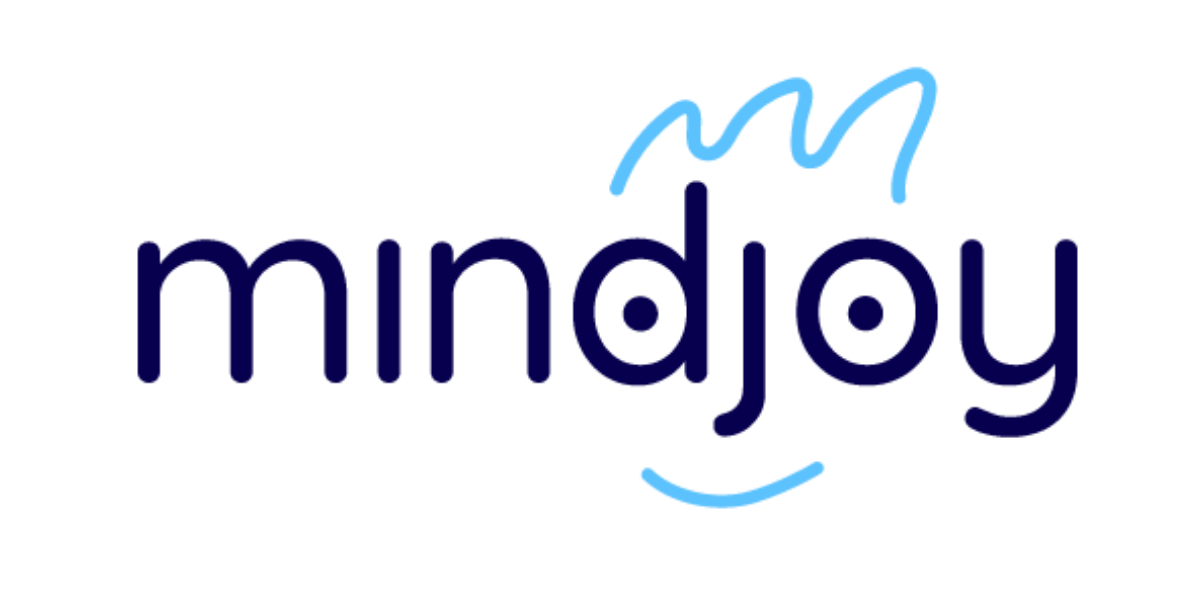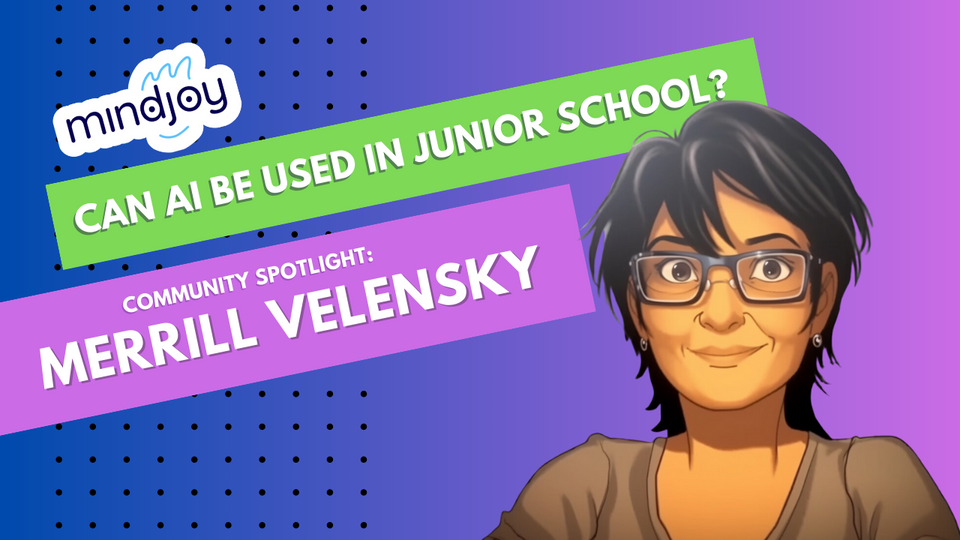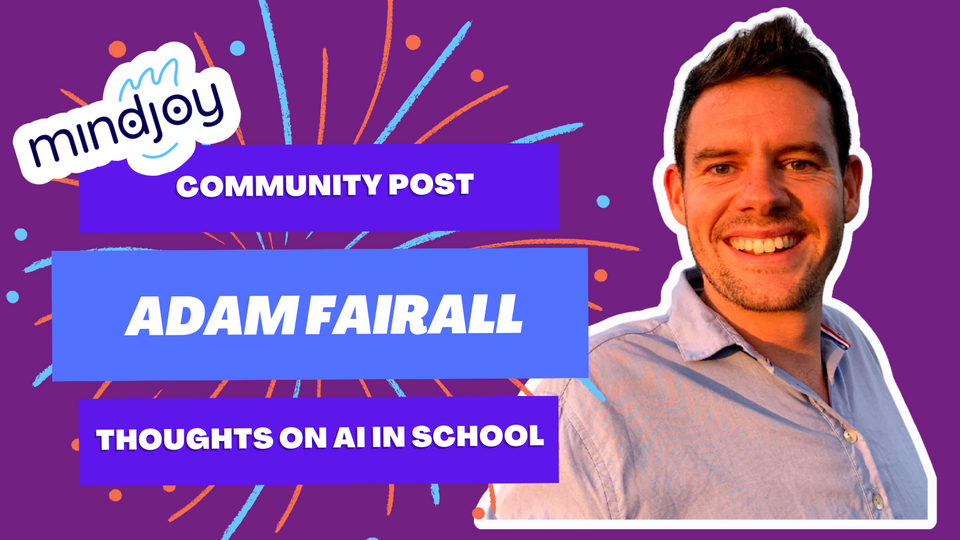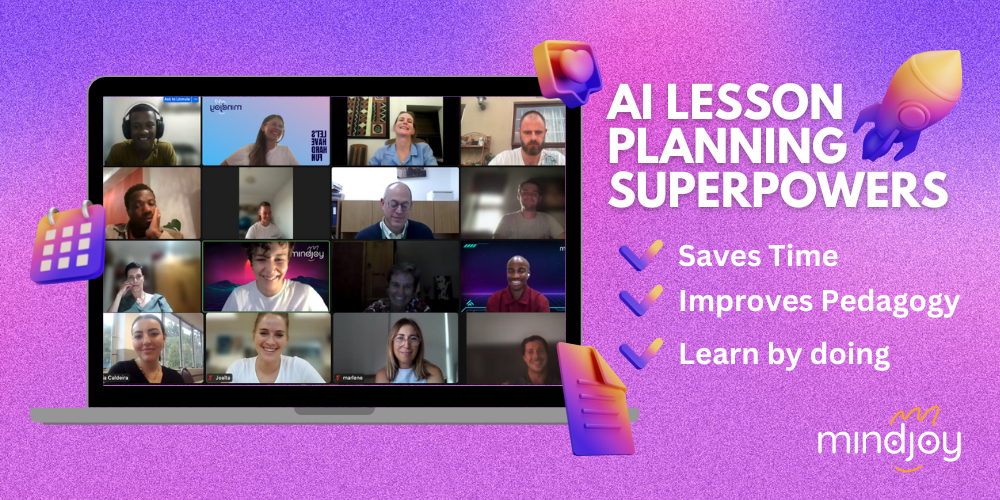Just ask Merrill Velensky from Springfield Convent Junior School!
Have you ever wondered if the AI revolution has any place in your junior school classroom?
Merrill Velensky from Springfield Convent Junior who teaches grades 2 to 7, would argue that it does. She’s already using AI with some of her young learners, and has found that a lot of junior school teachers are underestimating the incredible potential AI has to boost engagement, spark curiosity, support slower learners, and help integrate tech into any lesson.
Page, our Community Lead, caught up with Merrill, who has been using Mindjoy’s AI platform to not only introduce her learners to AI but to enhance her students’ learning in weekly projects and tasks.
Page: What made you start using AI in your classroom?
Merrill: Using AI is another 21st-century skill that our students will need in order to navigate the Global Village in which we live. Even my Grade 2s are aware of Artificial Intelligence and know that it’s changing the world. Our students are ready, willing and able to use this technology. Our guidance regarding their use of AI, especially during their formative years at junior school, will go a long way in preparing them to own their space in the world. This needs to be nurtured in an ethical, informed and emotionally intelligent way.
With all the hype, it’s also been important for me to make sure to address the misconception that AI is simply a tool for learners to "cheat". I want to make sure that I am fostering a respect for the technology at a young age, by making sure students understand its capabilities and limitations and our role in its development and use.
If we want learners to get the most out of these new technologies, but also teach them how to use it responsibly, we have to put it in their hands.
Page: How have your students responded to learning about and with AI?
Merrill: Their excitement at the prospect of AI making their work easier was definitely equal to the joy that I experienced when I first heard about it too. I saw a life filled with more hours of “me-time”, and they saw their struggles with Afrikaans orals disappearing like mist in the sun.
The revelation that “AI can do my homework” opens up such a rich conversation around ethics and responsible use and we have enjoyed lengthy discussions about it as well. Is it cheating? Can the teacher check if I used AI?
All of the students have also been exceptionally creative in how they have used it, and it’s nurtured a collaborative curiosity which has been exciting to witness - students are excited to share their AI outputs and it has led to more class discussions.
Some students are using it to plan and prepare tasks like presentations, some are using it to create study notes for their exams, while others are using it to refine their ideas for project-based tasks. I’ve encouraged them to experiment and they have loved testing it to see what it can do for them.
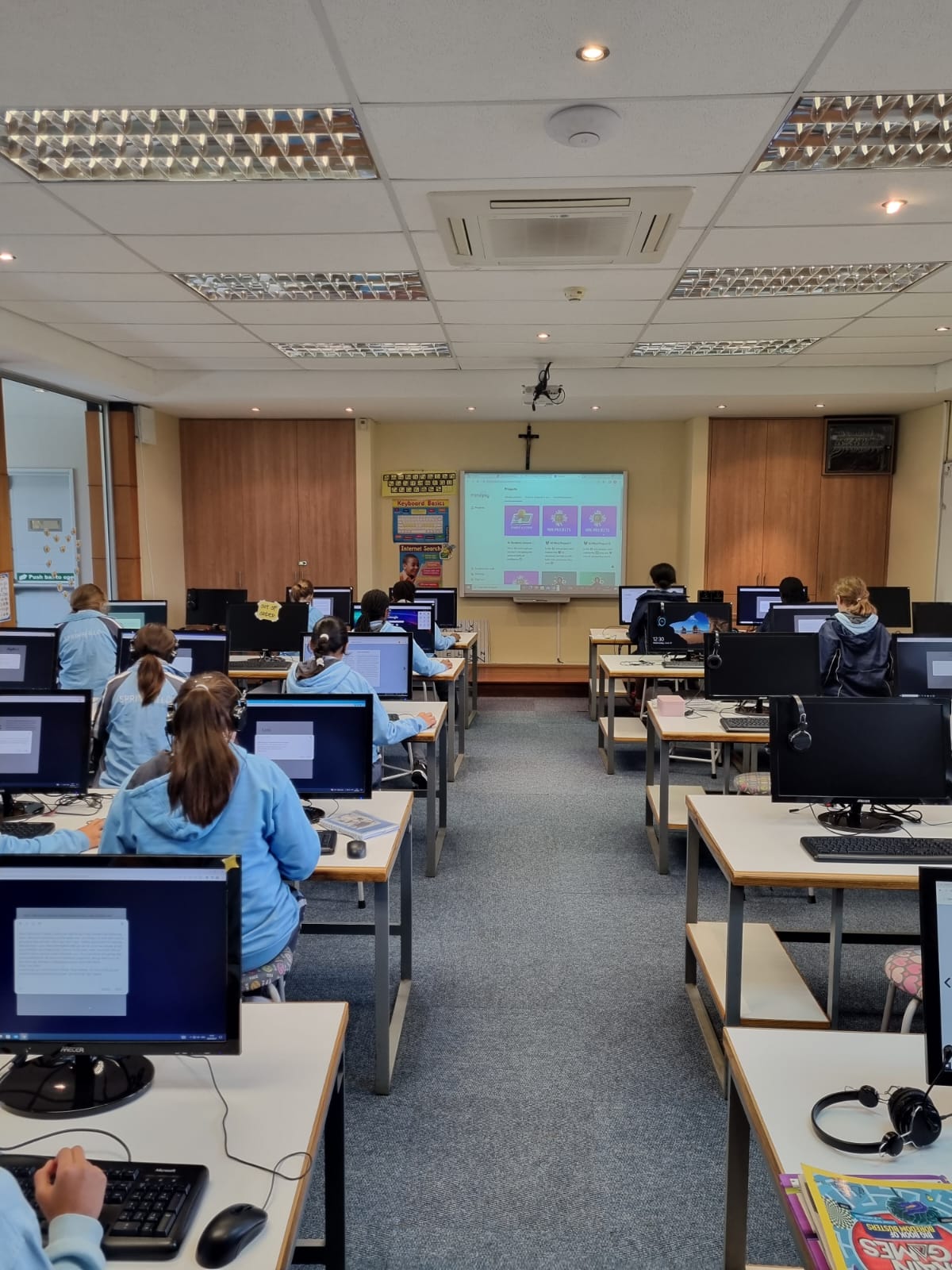
Page: What kind of impact has it had on their learning?
Merrill: More students are putting up their hands to ask questions or to discuss the outputs they get from the AI. They’re engaged with their content because they want to compare notes, see what outputs their friends get, compare what Google says to what the AI says, and fact check the AI. Certain topics, such as maths, language, and geography, have also become more interactive and relatable as a result, especially for learners who work at a slower pace. This has definitely supported them with understanding and retention.
Most interestingly, all the discussions around AI ethics, responsible use and potential bias has made my learners think more critically about the content they engage with, which is so important for the students' future engagement with technology.
Page: How do you ensure that the use of AI in the classroom promotes critical thinking as opposed to reliance?
Merrill: Prompt engineering and task design should be a crucial consideration for teachers and academic institutions when incorporating AI in the classroom. With prompt engineering as our guiding principle, I’ve been designing assignments that prompt students to use AI to explore various approaches, gather relevant information, and formulate the most effective strategies to complete the given tasks.
It would be a huge waste of time for my students and for me to tackle an assignment that can just be written by AI. I’ve been focusing on building projects which not only prevent learners from relying solely on AI but actually encourage them to utilise it as a resource to enhance their problem-solving and critical-thinking skills. I won’t give them any task for which AI can give them a straightforward answer that they can copy and paste.
A huge shout-out to Merrill for her innovative attitude and dedication, and to Springfield Convent Junior School for being forward-thinking in their approach to new technology - we love to work with passionate teachers who care deeply about preparing learners for the future.
If, like Merrill, you’d like to build and use awesome tech-based projects that use and teach AI, join our waiting list here! Our AI-driven Project Tool allows you to take the lessons you know and love, and turn them into engaging tech projects that excite learners (all in a matter of minutes).

